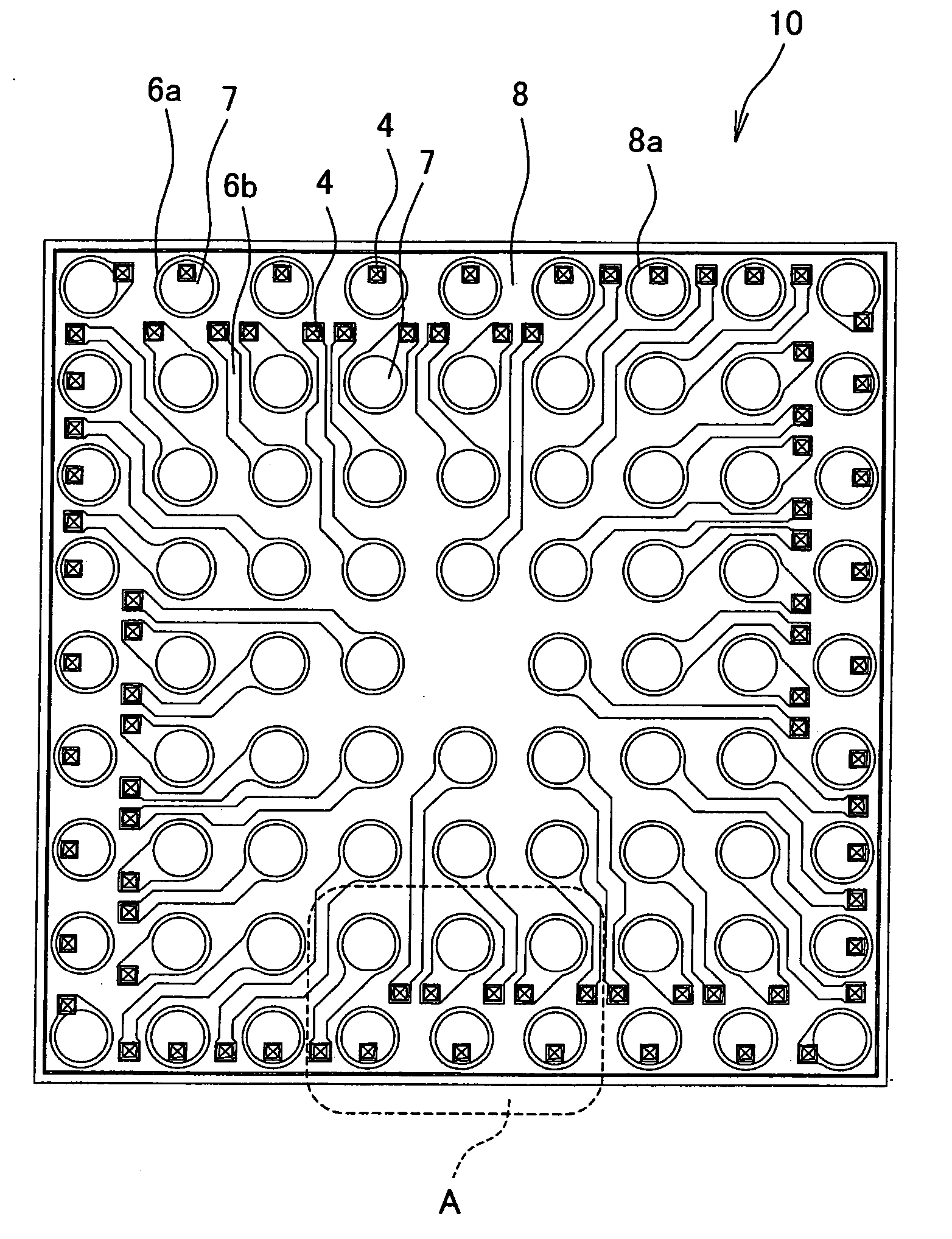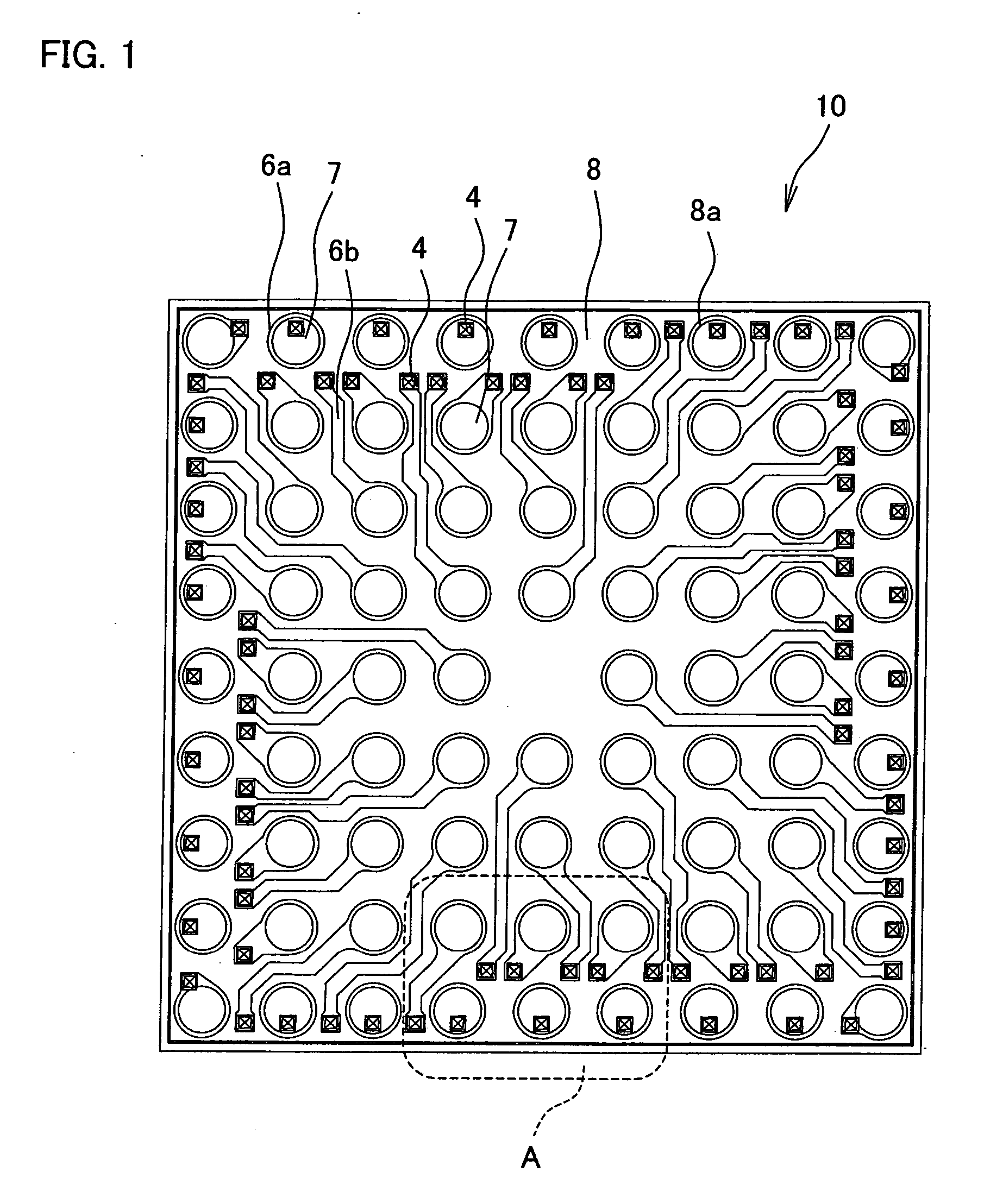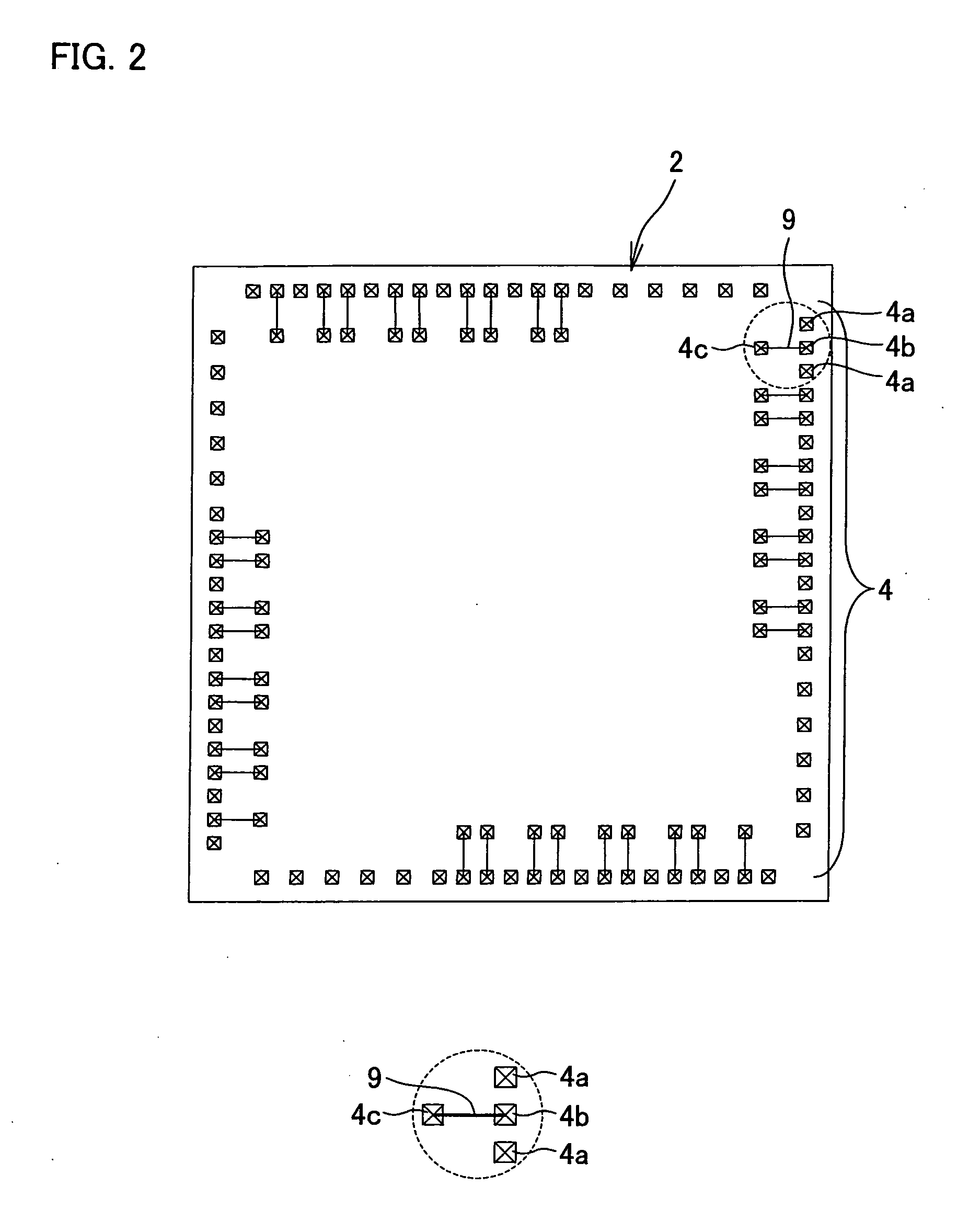Semiconductor chip and semiconductor device
- Summary
- Abstract
- Description
- Claims
- Application Information
AI Technical Summary
Benefits of technology
Problems solved by technology
Method used
Image
Examples
Embodiment Construction
[0032] The following will describe one embodiment of the present invention. FIG. 2 is a plan view illustrating a schematic structure of a main surface of a semiconductor chip 2 according to the present embodiment (surface on which a semiconductor element (semiconductor integrated circuit) is provided). In FIG. 2, an arrangement of electrode pads (electrode sections) 4 is mainly illustrated.
[0033] The semiconductor chip 2 of the present embodiment has external connection terminals 7 mounted thereon. The semiconductor chip 2 can be applied to (i) a wafer level CSP in which the semiconductor chip 2 itself serves as a semiconductor package, and (ii) a semiconductor package (CSP etc.) in which the semiconductor chip 2 is electrically connected to a stacked substrate by wire bonding.
[0034] As shown in FIG. 2, the semiconductor chip 2 has (i) a large number of electrode pads 4 (4a and 4b) disposed along the peripheral part of its main surface, and (ii) a large number of electrode pads 4 ...
PUM
 Login to View More
Login to View More Abstract
Description
Claims
Application Information
 Login to View More
Login to View More - R&D
- Intellectual Property
- Life Sciences
- Materials
- Tech Scout
- Unparalleled Data Quality
- Higher Quality Content
- 60% Fewer Hallucinations
Browse by: Latest US Patents, China's latest patents, Technical Efficacy Thesaurus, Application Domain, Technology Topic, Popular Technical Reports.
© 2025 PatSnap. All rights reserved.Legal|Privacy policy|Modern Slavery Act Transparency Statement|Sitemap|About US| Contact US: help@patsnap.com



